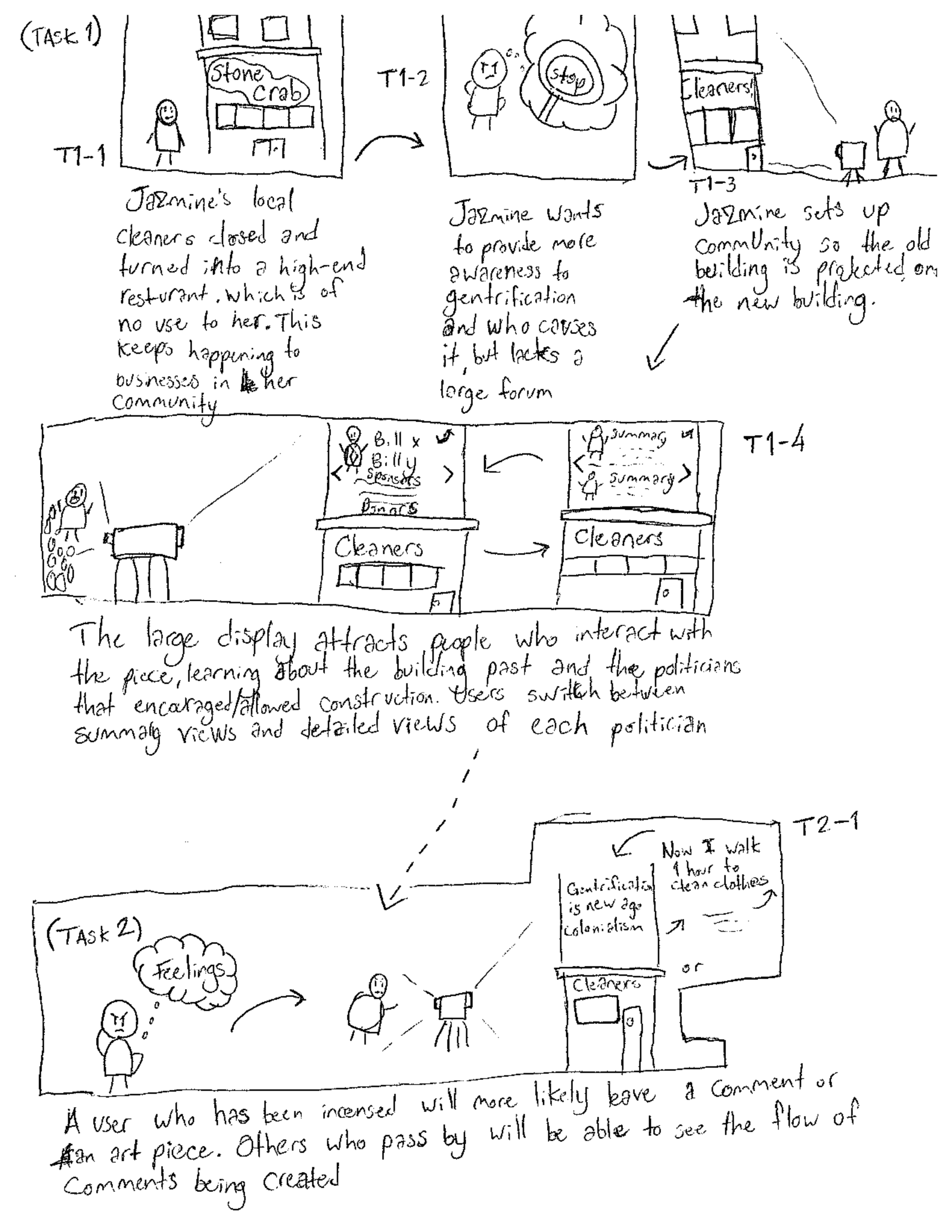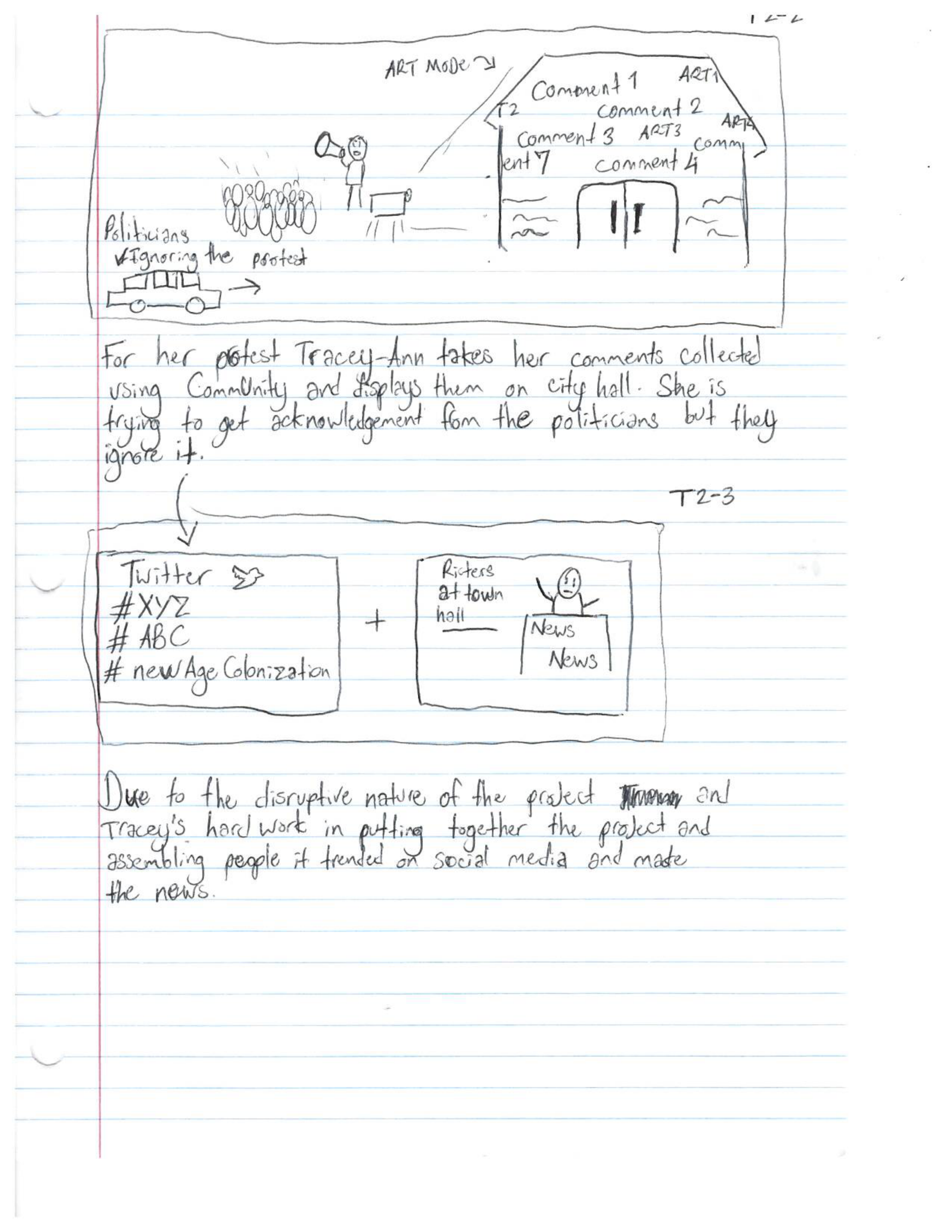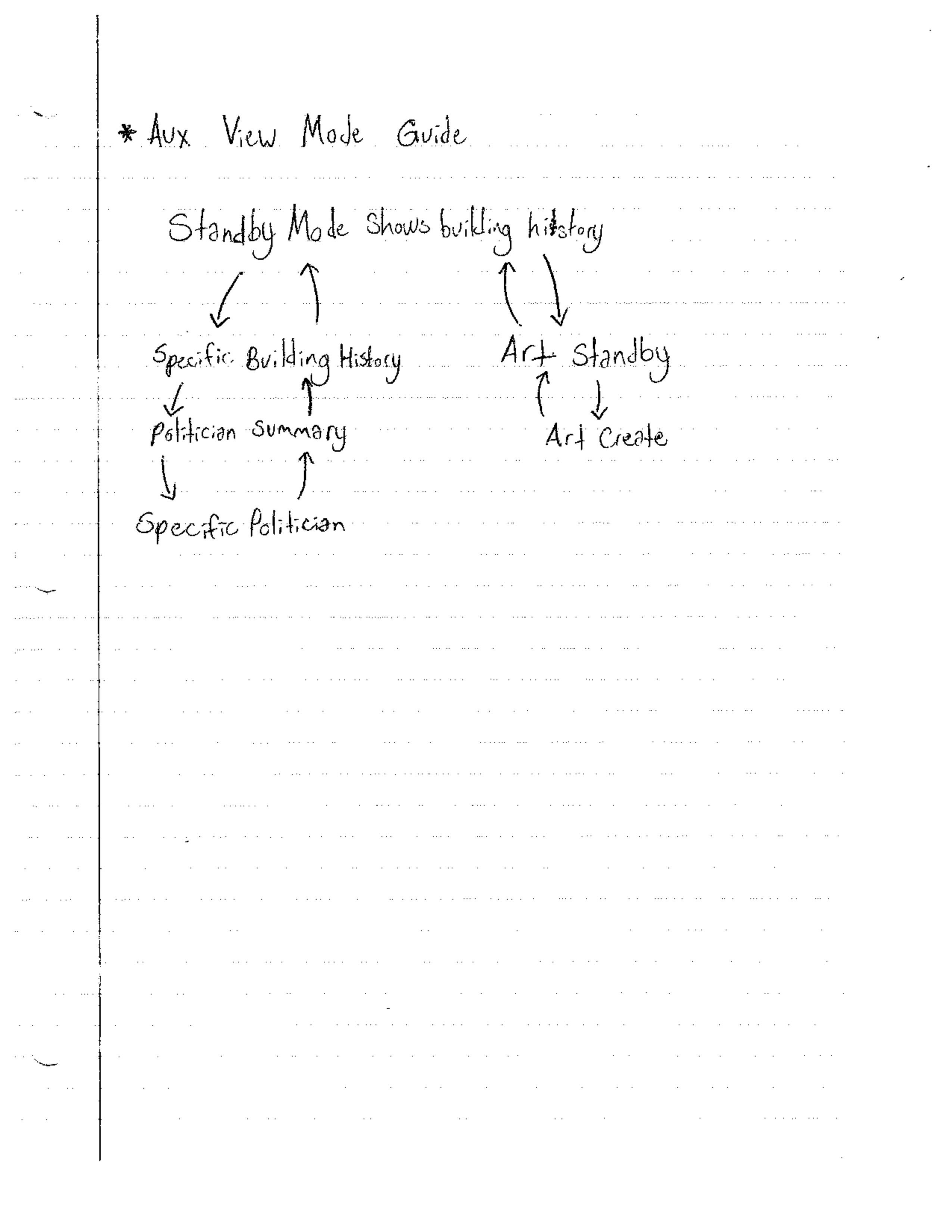Preserving a CommUnity
Design Team
- Liv Behrens: designer, researcher
- Teiheim Edwards: designer, researcher
- Peter Hollander: designer, researcher
Problem and Solution Overview
Though gentrification is a nationwide phenomenon affecting many Americans, those affected feel unified only in their feelings of isolation and disempowerment in the wake of their changing neighborhoods. Beyond this, residents of gentrified areas also face another challenge: unlike in more wealthy neighborhoods, members of these communities lack the time and resources to inquire about (and potentially voice discontent for) businesses and residences that are being built, thereby waiving their power to support their own neighborhoods. Thus residents can do little but watch laundromats and other services crucial to their day-to-day activities seemingly disappear, in their place popping up expensive coffee shops and tech startups.
Our design aims to raise awareness of this issue in a disruptive manner. We have selected for our design a large interactive display, to be placed in a public, central location within an urban gentrified community. The design itself will support some of our most ambitious tasks, namely the ability to track the history and development of buildings within the community and the ability to geotag art and other personal ideas to buildings and locations. Although such a design is likely too ambitious and non-profitable to receive real-world funding, we have chosen this design because it is by far the most eye-catching, and we believe it is an idea that could prove to be immensely impactful while synergizing the selected tasks. Additionally, it is not something that requires much effort on the part of the gentrified to still create a powerful statement.
Design Research: Goals, Stakeholders, and Participants
Because our topic is not one as conducive to contextual inquiries, our research involved conducting a semi-structured interview of the director of the Center for Learning in Action (CLiA), as well as guided storytelling with two college students and one middle-aged adult, each of whom had experienced gentrification firsthand. Our goal was to understand the problems faced by people experiencing gentrification by coming as close as possible to stepping in their shoes. The only criterion for the guided storytelling was that the individuals had experienced gentrification firsthand, and we believed this method the most effective because it allowed us to ask closely about people’s real experiences in gentrification while allowing the conversation to flow in whichever direction our participants felt important to reflect upon.
Design Research: Themes
As we were gathering our data from our research, we found a few issues that were common throughout all of our participants. These issues include unawareness of resources, feelings of isolation and disempowerment, and unawareness of what’s coming before it’s too late. While there are many means by which we could try to tackle these disparate issues, we thought it best to focus on one. By tackling the feelings of isolation that residents in gentrified communities feel, we hope to not only inspire a sense of community within these residents, but also to inform outsiders of the harm they may be doing to these residents by invading their communities.
Task Analysis
Our design is intended for use by everyone possible, as the ultimate goal is to raise awareness in all individuals. Though not everyone may participate in actually creating the display, our aim is that everyone wishes to interact with the display and learn in the process. Even someone who does not physically interact with the display can hopefully gain even from simply looking at it and thereby learning about her community. In doing so, we are fostering the new task of allowing people to track the history of buildings and better understanding the community. In creating an interactive display, we are also creating the new task of geotagging art to buildings, creating a connection between the physical community and oneself, showing others how much a community means to its current residents, regardless of how outsiders may themselves perceive it.
Original answers to our task analysis questions can be found here.
Proposed Design Sketches - “3x4”
All of our original proposals can be found here.
Written Scenarios - “1x2”
Inform the People/Build Community
Let us say Jazmine has noticed that her community is changing. Her peers and neighbors have noticed as well but do not know how to approach such a problem or where to voice their frustrations (T1-1). The people who have started to use the new more expensive buildings have little awareness of the land that they use. Jazmine thinks that if she were to create more awareness for the issue of gentrification and make her community feel as if they have more control in their neighborhood she could create a movement to halt legislation that would cause further damage to her community (T1-2). Most recently a cleaners has been converted into a high-end coffee shop. In order to show the history behind this building she decided to use community. On a busy night she sets it up and it displays the old cleaners over the new building (T1-3). People come and interact with the piece and while looking at the history of the building see the politicians who allowed and encouraged this development and who donated to them (T1-4). The display attracts a lot of attention as it has been set up and even people who do not interact with the piece have their attention drawn to it, learning about this new building which has disrupted the community it was situation in.
Organized Protest
Let us say Tracey-Ann wants to organize a protest in city hall about the recent developments that have taken place in her city. She recently used CommUnity on a newly developed building. Moved emotionally, members of the community left comments and made art to pertaining to the building which no longer provides a necessity that they needed. She wants to organize a protest of city-hall to oppose recent zoning changes in her area (T2-1). It is a closed meeting so it will be hard to gain the attention of the people in attendance from outside the building. She has gathered up comments and art pieces from concerned people around the city, old and young. Tracey-Ann organizes her protest outside of city-hall and a noticeable amount of people show up and protest. She decided to use CommUnity to broadcast her community’s feelings against the recent developments in their city which has only served to push them out of their homes. While the people who are part of the meeting still strive to ignore this display (T2-2), because of the size it catches on with social media, and gets picked up by news outlets. Hopefully this exposure will put pressure on the politicians to act on enacting legislation to protect the community(T2-3). *Note: Again it must be noted that this project cannot be seen as panacea for social movements. Little Miss Flint has gained traction on social media and on mainstream news, but there is still no action in enacting a government solution in actually providing the people of Flint Michigan usable water. Hopefully this project will serve as another tool for protesters and help them achieve their pre established goals.
Storyboards


